More than a Bike Race but a Journey through Time
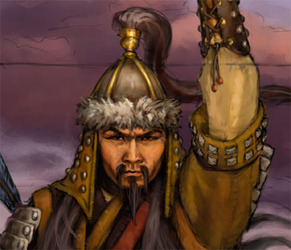 Genghis Khan (1165-1227)
Genghis Khan (1165-1227) Known in Europe and vanquished Asian territories as a blood-thirsty tyrant and the leader of the most savage conquering armies in history, but acknowledged as a hero in Mongolia, a champion of democracy, religious tolerance and equal rights for women. By unifying warring factions, peace and security was brought to 8000 kilometres of trade routes known as the 'Silk Road', laying the trade foundation for the modern world. During the time of Genghis Khan, Chinese inventions, such as printing, paper, gunpowder and the compass spread throughout the vast Empire and beyond.
Early Life
Invasions
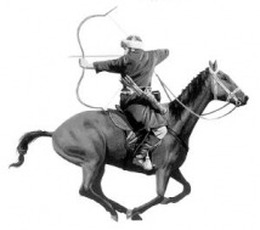 Mongol Mounted Archer
Mongol Mounted Archer In 1218, Genghis turned west toward central Asia and Europe. His armies rampaged through Muslim lands, spreading terror and destruction. Resistance meant whole city populations would be slaughtered. Moving north into the steppes of Russia, Genghis defeated the southern Russian armies and set a precedence for future Mongol campaigns.
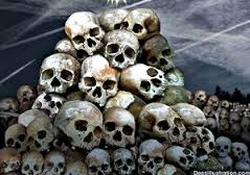
In 1227, after quelling a Chinese uprising, Genghis, the ruler of a nation of riders, fell from his horse while riding home and died, aged around sixty five. The most successful military commander the world has ever known was dead. According to legend, Genghis Khan's last words were that he had failed to achieve his destiny - to conquer the entire world - and his dying wish was for his sons to achieve this feat. In the following years, his sons doubled the size of the Mongol Empire, conquering many new lands, including Russia, Poland and Hungary.
Burial
According to a 2003 study, 1.6 million people (or 0.5% of males worldwide) are descendants of Genghis Khan, due to his far-flung travels, several wives and insatiable appetite for women. Although Borte was his only official wife, he followed tradition by taking several morganatic wives and a plethora of concubines. In 1260, thirty-three years after his death, there were around 20,000 blood members of his family.
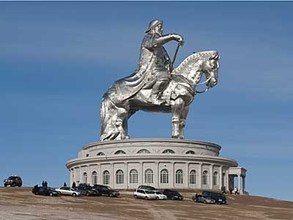 Genghis Khan Equestrian Statue
Genghis Khan Equestrian Statue Mistakenly believed to be Genghis Khan's birthplace, the 40 metre tall statue, where the GENCO Mongolia Bike Challenge begins, is actually the site where legend suggests he found a golden whip (a lucky omen in Mongolia), inspiring the fifteen year old Temujin to conquer much of the known world. Located fifty-four kilometres east of the capital UlaanBaator and pointing east towards Genghis's birthplace, the statue complex cost the GENCO Tour Bureau $US 4 million.
The Peak of the Mongol Empire
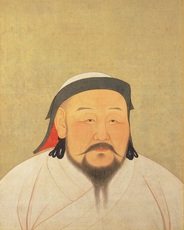 Kublai Khan (1215-1294)
Kublai Khan (1215-1294) Kublai Khan (known as Setsen Khan or 'Wise Khan') was a strong and fearless warrior but also intelligent and a great statesman, and exercised greater tolerance than his predecessors and even permitted the existence of several religions. One of Kublai's advisers told him "I have heard that one can conquer the empire on horseback, but one cannot govern it on horseback" and, unlike his contemporaries, Kublai actually acted upon this belief. He was a beloved leader to both the Mongols and the Chinese and he became the longest-ruling Khan of the Mongol Empire. Kublai met Marco Polo in the 1270's and the Italian explorer described him as the model of a universal sovereign with humanity and genorosity of spirit. Marco Polo even encouraged Europeans to explore the possibilities of trade with the Orient, including Christopher Columbus, whose search for the Orient by sea route resulted in him mistakenly discovering the Americas in 1492. Kublai reestablished unity within China and helped spread the advances of its brilliant and progressive civilisation.
The Decline of Empire
Mongolia was isolated from non-communist countries, the nobility wiped out, religion suppressed and Mongolian culture denied expression.
In 1990, the first elections were held and communism was rejected. Mongolia is currently enjoying a mining boom in copper, gold and coal. Indeed, since 2003, GDP has doubled and tourism is on the rise.
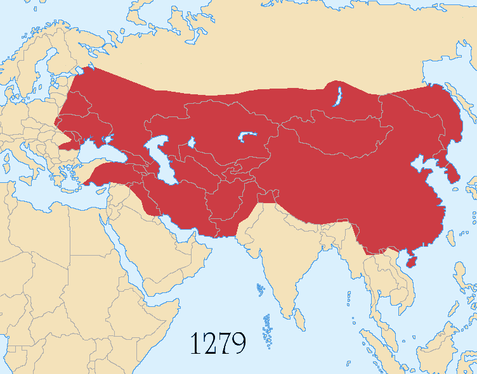





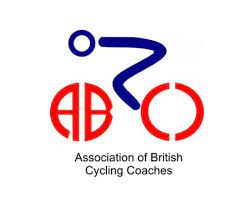
 RSS Feed
RSS Feed
